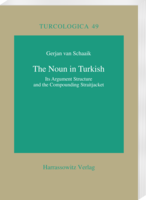|
|
The Noun in Turkish. Its Argument Structure and the Compounding Straitjacket is a comprehensive study of the rich system of nominal compounds in Turkish. This language builds compounds in an enormous diversity of forms and shapes, ranging from extremely simple forms to much more complex and at the same time structurally less transparent types of construction. This diversity is not limited to internal complexity as such, but is also determined by the immense variety in the types of complement the head noun of a compound may take. In linguistic theory it is generally assumed that verbs are lexically coded for a number of arguments. It is also believed by some theoreticians that a noun derived through nominalization has one or more inherited arguments.
This book shows on both semantic as well as morphological grounds that for Turkish such a stance is untenable, and also that the enormous range of patterns we find in complements can be accounted for in a relatively simple way by assuming that noun phrases, clauses and sentences can be captured by one unifying notion. This leads to the insight that a seemingly wide variety of constructions form one class as a result of the morphological process of compounding, rather than analyzing them syntactically. Furthermore, this study includes a discussion of the questions: why does Turkish have such an extremely productive system of compound formation that virtually knows no limits with respect to both complexity as well as expressibility, and secondly, how does this system relate to theoretical alternatives such as adjectivization? |






